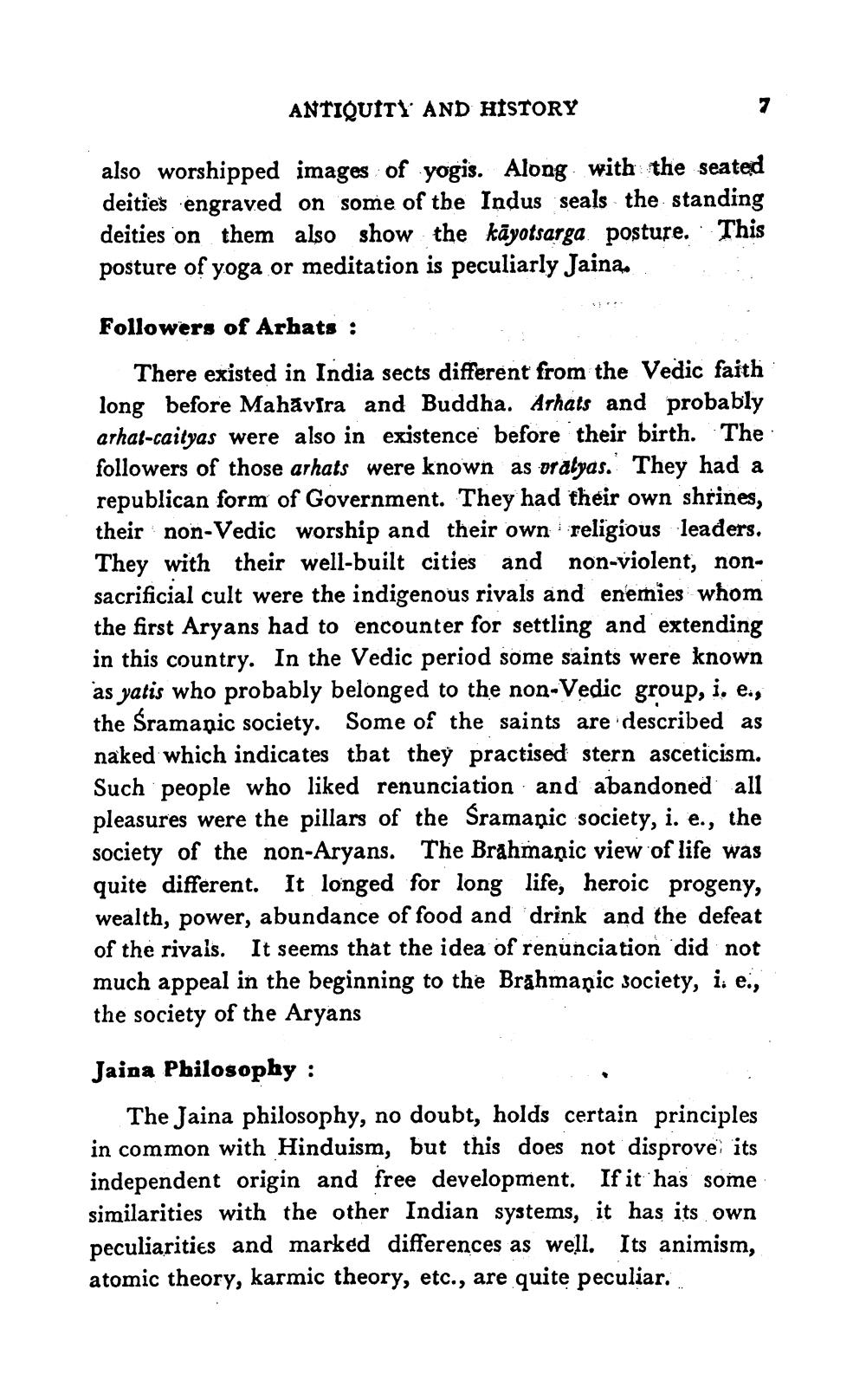________________
ANTIQUITY AND HISTORY
also worshipped images of yogis. Along with the seated deities engraved on some of the Indus seals the standing deities on them also show the kāyotsarga posture. This posture of yoga or meditation is peculiarly Jaina..
Followers of Arhats :
There existed in India sects different from the Vedic faith long before Mahāvsra and Buddha. Arhats and probably arhal-caityas were also in existence before their birth. The followers of those arhats were known as oratyas.' They had a republican form of Government. They had their own shrines, their non-Vedic worship and their own religious leaders. They with their well-built cities and non-violent, nonsacrificial cult were the indigenous rivals and enemies whom the first Aryans had to encounter for settling and extending in this country. In the Vedic period some saints were known as yatis who probably belonged to the non-Vedic group, i. e., the Śramapic society. Some of the saints are described as naked which indicates that they practised stern asceticism. Such people who liked renunciation and abandoned all pleasures were the pillars of the Sramanic society, i. e., the society of the non-Aryans. The Brahmaņic view of life was quite different. It longed for long life, heroic progeny, wealth, power, abundance of food and drink and the defeat of the rivals. It seems that the idea of renunciation did not much appeal in the beginning to the Brahmanic society, i. e., the society of the Aryans
Jaina Philosophy :
The Jaina philosophy, no doubt, holds certain principles in common with Hinduism, but this does not disprove its independent origin and free development. If it has some similarities with the other Indian systems, it has its own peculiarities and marked differences as well. Its animism, atomic theory, karmic theory, etc., are quite peculiar.




